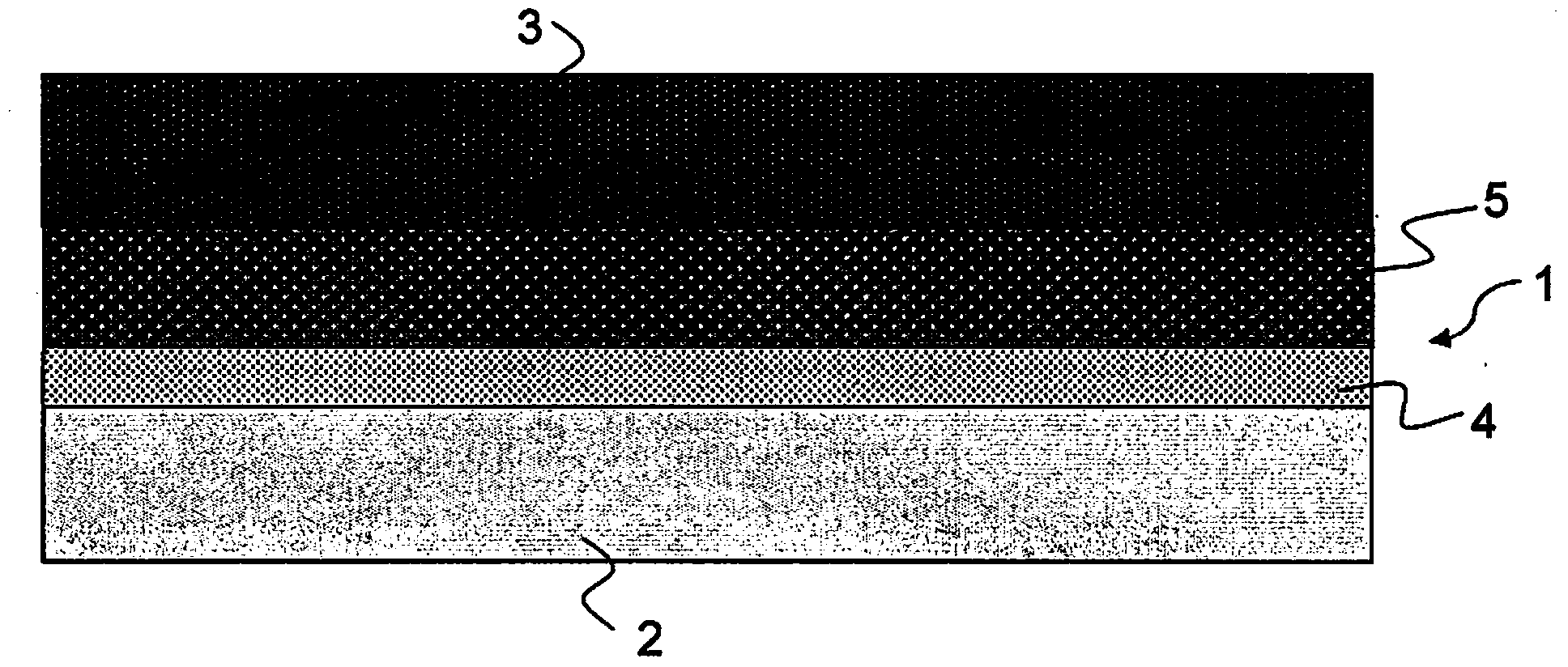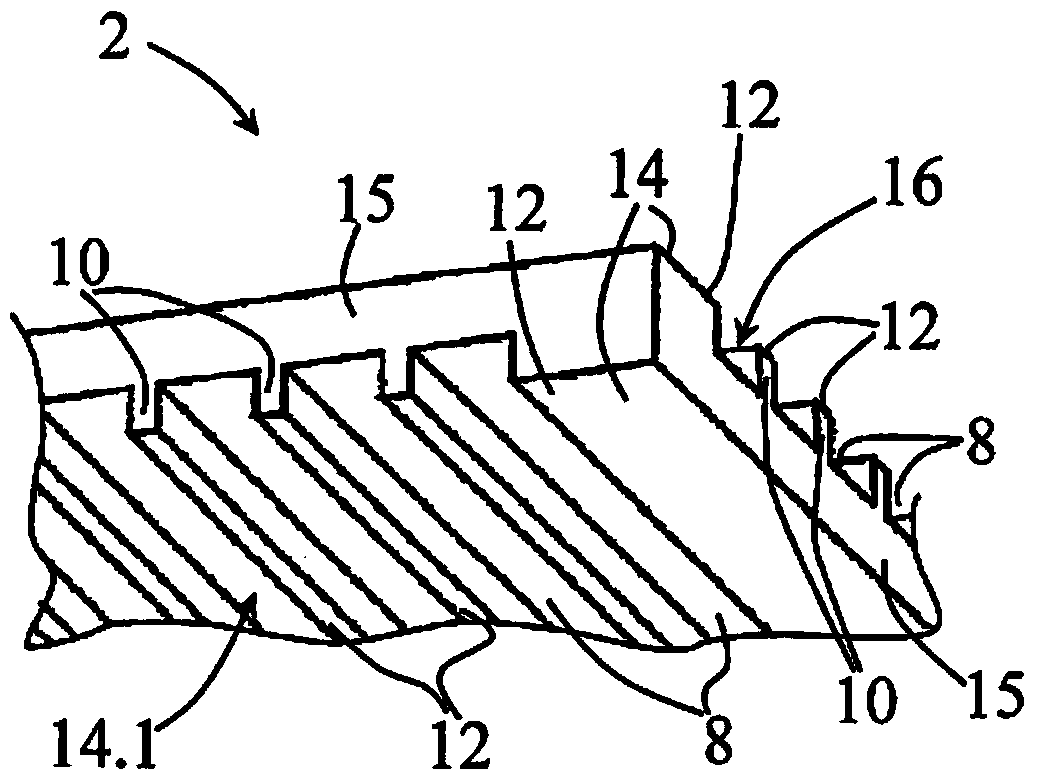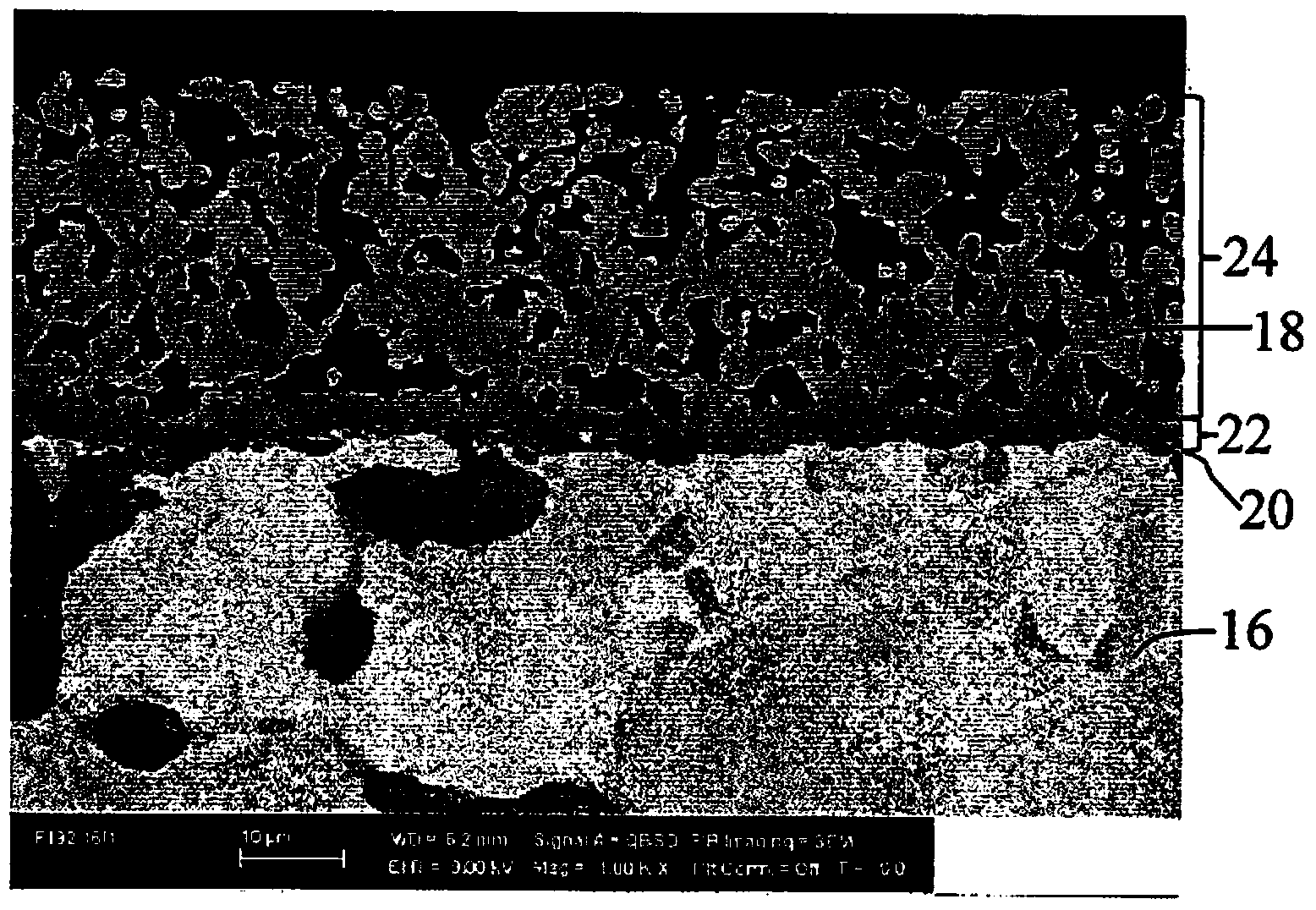Layer structure and use thereof to form a ceramic layer structure between an interconnect and a cathode of a high-temperature fuel cell
A fuel cell, layer structure technology, applied in the field of layer structure, can solve the problems of thermal expansion performance, high conductivity, chromium diffusion and evaporation, etc.
- Summary
- Abstract
- Description
- Claims
- Application Information
AI Technical Summary
Problems solved by technology
Method used
Image
Examples
Embodiment 1
[0096] Composed of Cu 0.6 Ni 0.4 mn 2 o 4 30 g of spinel powder with an average particle size between 1.5 μm and 3.5 μm and a composition of La 0.75 Sr 0.2 mn 0.9 co 0.1 o 3-δ 1.935g of perovskite powder with an average particle size between 1.5μm and 3.5μm, and 1.520g of CuO, 0.9516g of NiO and 5.0283g of Mn 2 o 3 (sintering aid) mixed in ethanol solution and subsequently homogenized on table rollers or in a planetary ball mill. The homogeneous powder is dried and subsequently sieved. The sifted powder is mixed with a solvent containing terpineol, to which ethyl cellulose has been previously added as a binder, and subsequently homogenized on a three-piece roller, resulting in a highly viscous, flowable slurry . The paste is applied to at least the contact web (the contact surface that conducts current) of the connector 2 by thick film techniques such as screen printing or mask printing or roll coating. However, a complete coating of the connecting body 2 is advant...
Embodiment 2
[0100] La 0.75 Sr 0.2 MnO 3-x 、Cu 0.6 Ni 0.4 mn 2 o 4 and metal oxides (CuO, Mn 2 o 3 , NiO, Co 3 o 4 ) were used as the initial material. For the manufacture of the first sub-layer 4 with the composition Cu 0.6 Ni 0.4 mn 2 o 4 30g of spinel powder with an average particle size between 1.5μm and 3.5μm, 1.008g of CuO, 0.631g of NiO and 2.2347g of Mn 2 o 3 Mixing in ethanol solution followed by homogenization on table rollers or in a planetary ball mill. The homogenized powder is dried and subsequently sieved. The sifted powder is mixed with a solvent containing terpineol, to which ethyl cellulose has been previously added as a binder, and subsequently homogenized on a three-piece roller, resulting in a highly viscous, flowable slurry . The paste is applied to the gas connection plate of the connector 2 by thick film techniques such as screen printing or mask printing or roll coating. However, a complete coating of the connecting body 2 is advantageous, wherei...
PUM
| Property | Measurement | Unit |
|---|---|---|
| Average particle size | aaaaa | aaaaa |
| Particle size | aaaaa | aaaaa |
Abstract
Description
Claims
Application Information
 Login to View More
Login to View More - R&D
- Intellectual Property
- Life Sciences
- Materials
- Tech Scout
- Unparalleled Data Quality
- Higher Quality Content
- 60% Fewer Hallucinations
Browse by: Latest US Patents, China's latest patents, Technical Efficacy Thesaurus, Application Domain, Technology Topic, Popular Technical Reports.
© 2025 PatSnap. All rights reserved.Legal|Privacy policy|Modern Slavery Act Transparency Statement|Sitemap|About US| Contact US: help@patsnap.com



